Mercury, the closest planet to the Sun, was discovered by astronomers in the ancient times. It is a challenging task to observe Mercury in the sky as it is usually located near the Sun either before sunrise or after sunset. With its small size, Mercury is the tiniest planet in the entire Solar System. To get a clear view of this remarkable planet, one would require powerful binoculars or a telescope. Notably, the orbit of Mercury is more elongated compared to the orbits of the other seven planets in the Solar System.
Mercury was one of the first celestial bodies discovered by humanity, although the exact date of its initial observation remains unknown to scientists. The history of its discovery dates back to the time of the ancient Sumerians, who resided during the Early Bronze Age (around the 4th to 3rd millennia BC). They associated this planet with the deity Nabu, who was revered as the God of writing. The knowledge of Mercury was also possessed by Babylonian and Ancient Egyptian priests. In ancient China, it was known as the Morning Star, while the Japanese and Vietnamese referred to it as the Water Star. In Indian mythology, the planet is referred to as Budha, the name of the God who holds dominion over Wednesdays. Interestingly, South American Indians believed that Mercury was actually a satellite of Neptune!
Interestingly, the ancient Greeks held the belief that Mercury was actually two separate planets: one that appeared in the morning sky (known as Apollo) and another that appeared in the evening sky (known as Hermes). This hypothesis persisted for over two thousand years until they eventually discovered that it was, in fact, a single celestial entity.
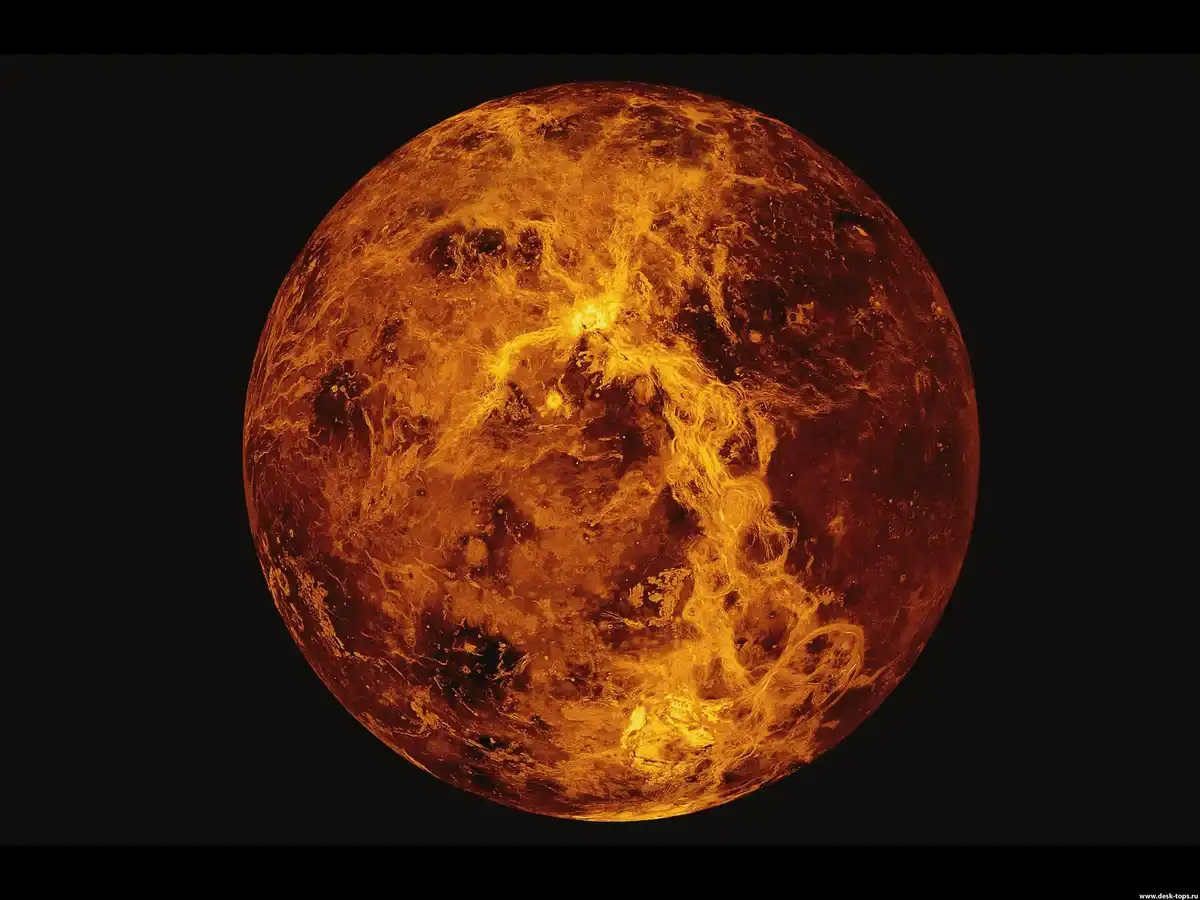

Who was the initial discoverer of a celestial object?
So who was the first person to uncover Mercury? Due to its visibility without the need for optical instruments, the existence of this celestial entity was recognized around 5000 years ago. Not only was it acknowledged, but its position and movement were also able to be calculated. The precision of these calculations astonishes modern observers. The true discoverer of the planet closest to the Sun remains unknown, as there is no written record of this event.
Research history
The exploration of Mercury commenced in 1631 when Pierre Gassendi became the first individual to observe a celestial object transiting the Sun.
A few years later, Giovanni Zupi documented the phases of Mercury and deduced that the planet orbited around the Sun. Other astronomers of that era also investigated this celestial object and each formulated their own theories. For instance, astronomer Giovanni Schiaparelli, upon scrutinizing Mercury, hypothesized that the celestial body is tidally locked to the Sun, meaning that only one side perpetually faces the bright star.
Copernicus’ Hypothesis
The concept of a heliocentric system was first introduced by Nicolaus Copernicus. According to his theory, the Sun was positioned at the center of our solar system, with Mercury being recognized as a planet for the first time.
Glimpses into Mercury’s Nature by Galileo Galilei
Galileo Galilei solidified Mercury’s status as a planet by fully endorsing Copernicus’ ideas. Due to its close proximity to the Sun, Mercury is the smallest planet in the solar system and presents significant challenges when it comes to observation, even with the aid of powerful telescopes, making it a subject of utmost complexity for scientific study.
The Earth group still has much to learn about this planet, which remains one of the least explored. When was the planet’s inner orbit first examined and the initial images of its surface captured?
Determining Mass
In 1841, the field of Mercurian astronomy gained another significant discovery when Johann Enke successfully determined the planet’s mass by studying perturbations in the motion of the comet now known as Enke’s Comet.
During the early 1960s, Soviet scientists managed to gather data on the surface of Mercury by utilizing a telescope with a reach of 5 kilometers.
Mariner space program
Shortly after, American scientists replicated the experiment and verified the findings of their Soviet counterparts: the orbital revolution takes 88 Earth days, while the axial revolution takes 59 days.
The Mariner interplanetary spacecraft’s successful mission yielded a wealth of information about Mercury. In order to explore space, two spacecraft were constructed: the primary vessel and a backup (in case the initial launch proved unsuccessful). The backup spacecraft is currently on display at the Space Museum in Washington, DC.
This investigation holds a distinctive position in the annals of space exploration. During its mission, Mariner 10 transmitted over 4,000 images to Earth and effectively surveyed two planets in a single voyage (Mercury and Venus).
The interstellar spacecraft successfully gauged the temperature on Mercury, captured approximately 45% of the celestial body’s surface in photographs, and gathered data on its gaseous atmosphere.
Messenger
The Messenger spacecraft received the final images from the object back in 2008. It took the spacecraft a total of 6.5 years to reach its designated orbit.
Throughout its mission, the interplanetary station made a groundbreaking discovery when it found ice on the surface of the planet. The presence of craters on the planet suggests that geological activity ceased billions of years ago. At present, approximately 70% of the studied area is covered with a crater-ridden surface. Additionally, dark rocks have been found within these craters, believed to be composed of iron, silicon, or titanium.
Scientists speculate that Mercury may have had rings at some point in the past, but currently, there is no sign of any ring system.
Etymology of the name
What does the word Mercury mean? The name of the planet Mercury has its roots in Roman mythological beliefs. It is derived from the god (Mercurius, Mircurius, Mirquurius), who was revered as the deity of commerce and possessed exceptional skills in agility, cunning, and trickery.
Born in the cavern of Mount Arcadia, he was the offspring of Zeus and Maia (a mountain nymph). Even in his early years, Mercury displayed remarkable dexterity and cleverness, unrivaled in his ability to pilfer. His talents were so extraordinary that he was even capable of absconding with Poseidon’s trident and Zeus’s scepter.
The name of the God in Greek mythology is Hermes. He was also known for wearing distinctive sandals with wings, which allowed him to travel quickly.
The reason why the planet is named after this God is related to the speed at which Mercury orbits around the Sun. It completes one revolution around the star in 88 Earth days, making it the fastest planet in the Solar System.
What is the significance of the name Mercury?
The name Mercury has a literal translation that means “dedicated to Mercury”. Individuals with this name are known for their benevolence, politeness, and gentleness. They possess other positive qualities such as a profound understanding of reality, adaptability, a love for acquiring knowledge, and a natural inclination for socializing. Such individuals embody a unique blend of high intellectual capability, pragmatism, and artistry.
Mercury’s Age
How old is Mercury? Does this planet fall into the category of being considered young or old? In reality, neither of these labels accurately describe this celestial body, as all planets share the same number of years.
What is Mercury’s current age? It is neither older nor younger than the other planets, as it shares the same age – 4.6 billion years. It is widely accepted that our Sun formed first, followed by the simultaneous formation of all the other planets.
Mercury is a planet that has always held a sense of mystery within the solar system. Its existence was known to humans as far back as 5,000 years ago, however, during that time it was believed to be two separate celestial bodies. As a result, this satellite of the Sun had two distinct names for an extended period. It wasn’t until the beginning of our era that the idea emerged suggesting that Mercury is actually a single planet capable of passing through the Sun’s disk. Therefore, it is difficult to pinpoint exactly who and when Mercury was officially discovered. However, it is possible to provide an approximate account of its discovery.
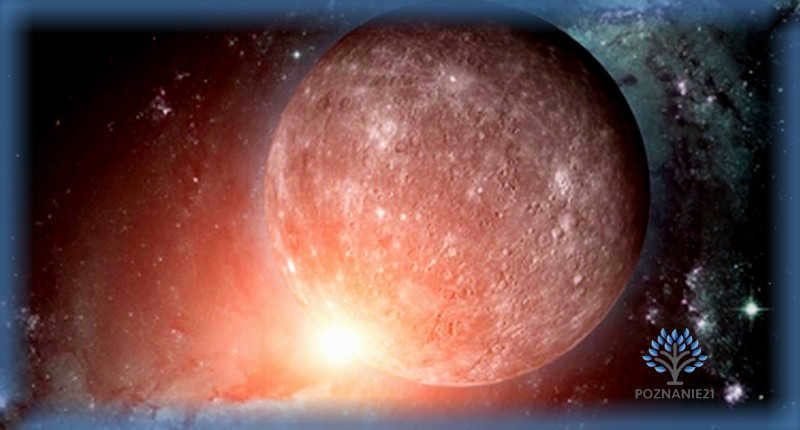
The ancient origins of studying Mercury
The earliest mentions of this celestial body can be traced back to Sumerian cuneiform texts from the 3rd millennium B.C. During that time, the Sumerians referred to it as the “bouncing planet”. Babylon later took up the study of Mercury, associating it with the gods Ninurta (the warlike patron, lord of thunder, rain, and floods) and Nabu (the wise scribe).
Ancient Egypt then continued the exploration of this fascinating planet, giving rise to the myth of the gods Seta and Horus who were in opposition. It is therefore not surprising that both names were given to the morning and evening manifestations of Mercury.
The narrative then transports us to the ancient times of Greece, where the celestial body is once again perceived as two distinct entities and designated as Stilpon and Hermaeon. Subsequently, these appellations were modified to the names of the deities, Apollo and Hermes.
Subsequently, the Romans commenced their observation of Mercury, and at this juncture, the biographies of the two planets intersect – Claudius Ptolemy proposed that this celestial entity could traverse the solar disk. Moreover, he contended his hypothesis by stating that it is simply unfeasible to witness such a phenomenon given the diminutive size of the planet.


Who is Mercury named after and why?
The Romans, who were able to identify the number of observable planets, couldn’t help but notice the swift movement of this agile celestial object, which traversed the sky faster than any other known planets.
It is therefore understandable why they named this agile light in the sky Mercury – after the nimble god of commerce, depicted with a winged helmet. It’s not surprising that since then, the planet has been symbolized by the image of the winged helmet of this very god, with the term “star” eventually being dropped.
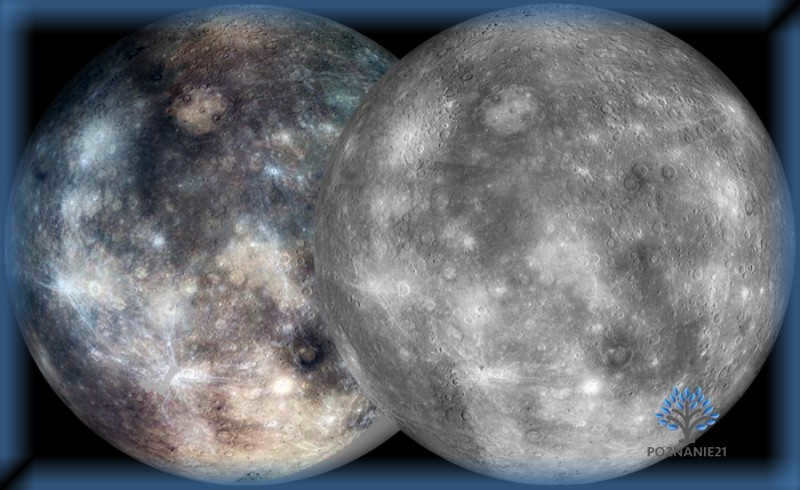

A concise chronicle of subsequent observations
In Medieval Andalusia, the description of Mercury’s orbit, which resembled the shape of an egg or a pine nut, was first recorded. The era of “revolutionary discoveries” during the geocentric model of the universe concludes here, and the next significant breakthroughs can be traced back to the 17th century, following Nicolaus Copernicus’s initiation of the scientific revolution by “shifting” the center of the universe from the Earth to the Sun and formulating the heliocentric model of the universe.
Galileo Galilei was the first person to observe Mercury through a telescope in the early 17th century. In 1631, Pierre Gassendi used a telescope to witness the planet passing across the Sun’s disk. Giovanni Zupi’s studies in 1639 provided further evidence that Mercury orbits the Sun.
On May 28, 1737, John Bevis became the first to witness Mercury’s disk being covered by Venus’s disk (this event will not happen again until 2133). In 1800, Johann Schroeter reported seeing mountains as tall as twenty kilometers on Mercury’s surface, and in the 1880s, Giovanni Schiaparelli proposed that Mercury completes a full orbit around the sun in 88 days.
And in 1973, we witnessed the launch of the groundbreaking Mariner-10, an automated space station that marked the end of an era in our exploration of our enigmatic celestial companion and heralded the dawn of a new, cutting-edge chapter.
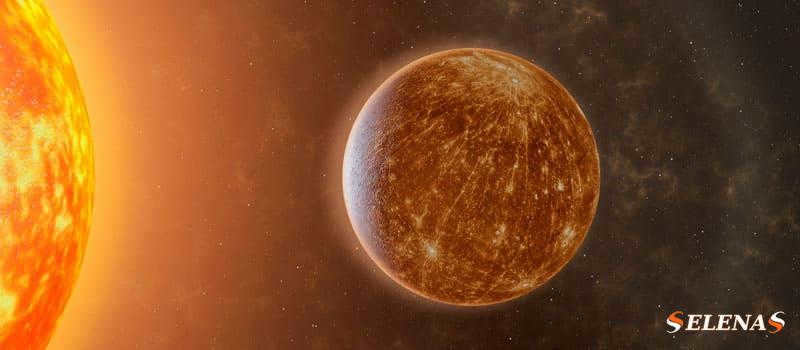
Today, I want to share some fascinating information about the Sun’s nearest and tiniest planet, known as Mercury.
Mercury holds the distinction of being not only the closest planet to the Sun but also the smallest among the eight planets in our solar system.
Interestingly, Mercury completes three rotations on its axis for every two revolutions it completes around the Sun. This unique phenomenon takes approximately 88 Earth days.
This planet is also gravitationally locked, making its rotation a remarkable feature in our solar system.
Every seven years or so, we have the opportunity to witness Mercury’s transit across the Sun from Earth. This event occurs because Mercury’s orbit is tilted at an angle of 7 degrees to the plane of Earth’s orbit.
The upcoming transit of Mercury occurred on May 9, 2016 and was observable from Europe during the afternoon.
It is called after the Roman deity Mercury, who is known as the messenger of the gods, possibly because of the planet’s rapid orbital velocity.
What else distinguishes this diminutive terrestrial planet?
What makes it intriguing?
Let’s delve into some fascinating details about Mercury!
Comparison of Mercury’s Size with Earth
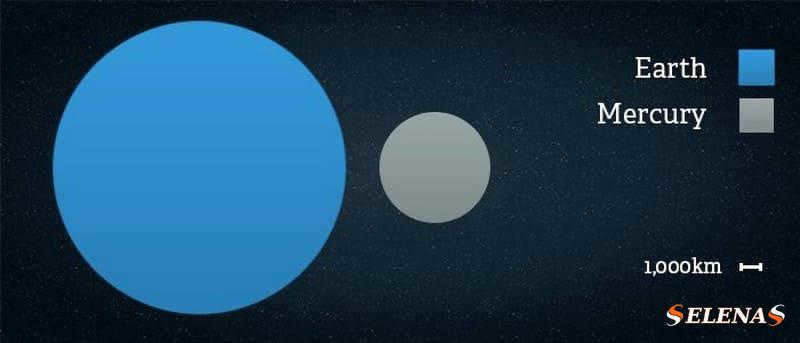

Fascinating information about Mercury
- Mercury has been familiar to humans since ancient times, and although the exact date of its identification is uncertain, it is thought that the first mentions of the planet date back to 3000 BC by the Sumerians;
- A year on Mercury lasts 88 days, and a day on Mercury is equivalent to 176 Earth days. Mercury is nearly tidally locked to the Sun, a phenomenon known as gravitational lock, which has gradually slowed down the planet’s rotation to nearly synchronize with its orbit around the Sun;
- Mercury orbits the Sun at such a rapid pace that early civilizations believed they were witnessing two distinct stars – one appearing in the morning and the other in the evening;
- Following Earth, Mercury holds the distinction of being the second most densely packed planet. Despite its compact size, Mercury’s density is exceptionally high due to its predominant composition of heavy metals and rocks, aligning it with the defining characteristics of the Earth-group planets;
- Mercury derives its name from the Roman gods’ messenger, known as Hermes in Greek mythology. This association stems from the planet’s rapid orbit around the Sun, mirroring the swift delivery capabilities of Mercury, the Roman deity associated with message transmission;
- It wasn’t until 1543, when Copernicus unveiled his heliocentric model of the solar system, positioning the Sun at its center rather than the previously held belief of Earth’s centrality, that astronomers officially recognized Mercury as a planet;
- With only 38% of Earth’s gravity, Mercury is unable to retain its atmosphere, as it is constantly blown away by the solar wind. However, this same solar wind also brings in new gases, radioactive decay, and dust from micrometeorites, replenishing the planet’s atmosphere;
- Due to its low gravity and lack of atmosphere, Mercury does not have any satellites or rings;
- In the past, scientists believed in the existence of a planet called Vulcan, which was thought to be located between Mercury’s orbit and the Sun. However, no evidence of such a planet has ever been found;
- Mercury’s orbit is more elliptical than circular, making it the most eccentric orbit in the solar system. It is also the least circular of all the planets, according to astronomers and scientists.
- Venus, despite being farther from the Sun than Mercury, actually experiences higher temperatures, making it the second hottest planet in the solar system. This is because Mercury lacks an atmosphere to regulate temperature, resulting in extreme temperature fluctuations ranging from -170°C (-280°F) at night to 430°C (800°F) during the day;
- Unlike other planets, Mercury does not have seasons due to its minimal axial inclination;
- Mercury is unique in that it does not complete one revolution around the Sun in a year. Instead, it completes three revolutions for every two revolutions around the Sun, almost being tidally locked to the Sun;
- Mercury’s orbit played a crucial role in confirming Albert Einstein’s general theory of relativity;
- Mercury possesses a substantial iron core that accounts for approximately 40% of its total volume (in contrast to Earth’s core volume, which makes up 17%), residing at the center and boasting a radius ranging from 1,800 to 1,900 kilometers (equivalent to 1,100 to 1,180 miles). The scientific community hypothesizes that Mercury’s core is most likely in a molten state;
- The outer shell of Mercury is relatively thin, measuring only 500 to 600 kilometers (or 310 to 375 miles) in thickness. In comparison, Earth’s outer shell, comprising the mantle and crust, has a thickness of 2,930 kilometers (equivalent to 1,819 miles);
- Mercury possesses an exceedingly tenuous atmosphere, comprised of atoms originating from the planet’s surface that have been propelled into space by the solar wind. Due to the high temperatures on Mercury, these atoms rapidly escape into space, resulting in a constant replenishment of its atmosphere;
- Mercury possesses a feeble magnetic field, with a strength that is approximately 1% of Earth’s magnetic field.
- There have been only two spacecraft missions to the planet Mercury. The reason for this is because Mercury is located very close to the Sun, making it challenging to reach. Any spacecraft attempting to visit Mercury would have to cover a distance of 91 million kilometers while being affected by the Sun’s strong gravitational pull. One of the missions, called “Mariner 10”, took place in 1974-75. It flew by Mercury three times and managed to map half of its surface. Unfortunately, on March 24, 1975, the spacecraft ran out of fuel and is believed to still be in orbit around the Sun. The other mission, known as MESSENGER, was launched in 2004. Its purpose was to study various aspects of Mercury, such as its high density, geological history, and magnetic field. There is also another mission called BepiColombo, which was supposed to be launched by the European Space Agency in 2015. Japan is expected to reach Mercury in 2019 as part of this mission.
- Mercury is known for having a greater number of craters and impact marks compared to any other planet in our solar system. The reason for this is that Mercury, unlike most planets, is not geologically active, meaning it cannot heal itself from collisions with asteroids and comets. The surface of Mercury is often compared to that of the Moon due to its abundance of craters. Interestingly, many of these craters are named after famous writers and artists. If a crater on Mercury exceeds 250 kilometers in diameter, it is classified as a Basin. The largest basin on Mercury is called the Caloris Basin, which measures approximately 1,550 kilometers in diameter. This significant feature was first discovered by the Mariner 10 spacecraft.
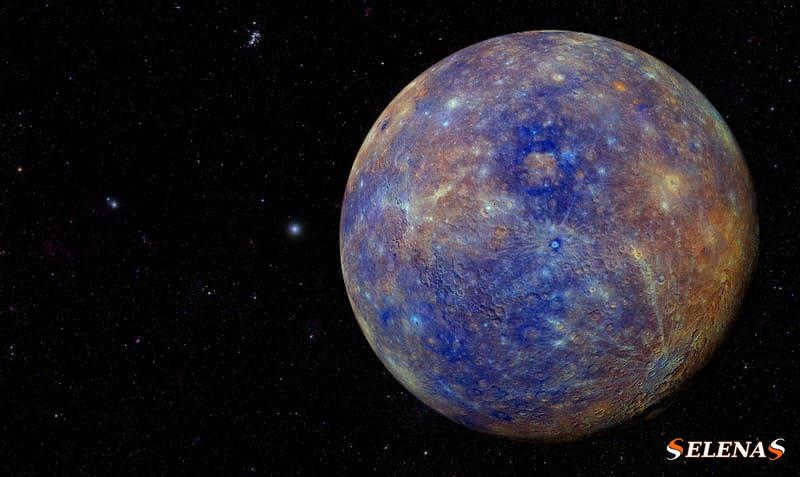

Additional information and interesting facts about Mercury
What remains fascinating about Mercury is the limited extent of our knowledge concerning some of its essential characteristics, until recently.
For instance, it was only in 1974 that the Mariner 10 spacecraft captured the initial images revealing specific details of Mercury’s surface.
In recent years, unexpected findings regarding Mercury’s atmosphere and interior have challenged previously accepted theories.
This is an exciting period of exploration and fresh insights into Mercury.
On March 18, 2011, the MESSENGER spacecraft entered into orbit around Mercury for a year-long mission.
Hopefully, many of our inquiries will be resolved, and undoubtedly new ones will emerge.
Mercury’s atmosphere is so thin that it is practically non-existent.
In fact, it is about 10^15 times less dense than Earth’s atmosphere, making it closer to a true vacuum than any vacuum ever created by humans.
The reason for the lack of a substantial atmosphere on Mercury can be explained in two ways.
Firstly, with only about 38% of Earth’s gravity, Mercury is unable to retain much of an atmosphere.
Secondly, due to its close proximity to the Sun, Mercury is constantly bombarded by solar winds, which carry away most of the small amount of atmosphere that does accumulate.
It is slim, but authentic
Notwithstanding its meager atmosphere, Mercury still possesses one.
According to NASA, the presumed chemical composition of its atmosphere is as follows: 42% oxygen (O2), 29% sodium, 22% hydrogen (H2), 6% helium, 0.5% potassium, and potentially trace amounts of argon, carbon dioxide, water, nitrogen, xenon, krypton, neon, calcium (Ca, Ca+), and magnesium.
An extraordinary consequence of this rarefied atmosphere is the planet’s surface experiencing extreme temperatures.
With a minimum temperature of approximately -180°C and a maximum of around 430°C, Mercury possesses the widest range of surface temperatures among all planets.
The soaring temperatures on the side facing the Sun are a result of the atmosphere being inadequate to absorb solar radiation.
Regarding the extreme cold conditions on the side that is not exposed to the Sun, due to the absence of a significant atmosphere to retain solar radiation, all of the warmth dissipates into the void of space.
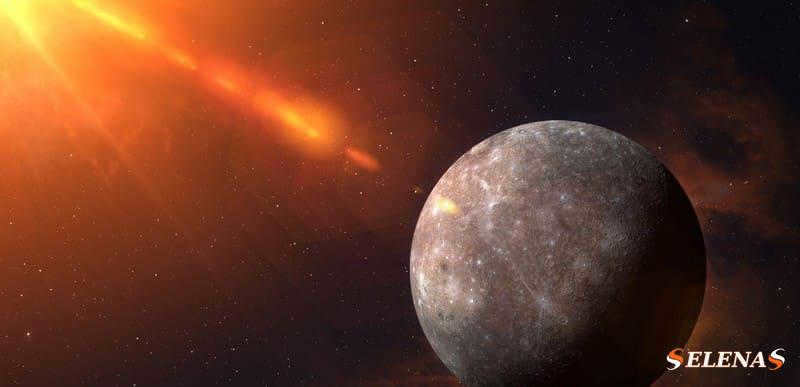

Interesting information about Mercury’s surface
Scientists were unable to fully understand the surface of Mercury until 1974 due to its close proximity to the Sun.
The Sun’s proximity to Mercury makes it difficult to observe the planet just before sunrise or just after sunset.
Unfortunately, during these times, our view of Mercury from Earth is obstructed by a significant portion of Earth’s atmosphere.
However, the Mariner 10 spacecraft was able to capture clear and remarkable images of almost half of Mercury’s surface during its three orbits around the planet in 1974.
This mission provided scientists with valuable insights into the planet’s surface.
The findings revealed that there are three notable characteristics on the surface of Mercury.
One of these characteristics is the presence of a vast number of impact craters that have accumulated over billions of years.
The most prominent among these craters is the Caloris Basin, which measures 1,550 kilometers in diameter.
Another characteristic is the existence of plains located between the craters.
These areas have a smooth surface, indicating that they were likely formed by ancient lava flows.
The third distinctive feature is the presence of cliffs, also known as ledges, which vary in length from tens to thousands of kilometers and in height from a hundred meters to two kilometers.
The significance of these two characteristics lies in the implications they suggest.
The existence of ancient lava fields indicates that there was once volcanic activity in this area.
However, based on the number and age of the craters, scientists have determined that Mercury has been geologically inactive for a considerable period of time.
Another interesting feature on the surface provides us with valuable information.
Essentially, the ledges observed on the surface are massive cliffs formed as a result of the planet’s crust warping.
What is crucial about the warping of Mercury is what it signifies.
In order to comprehend the significance, we must draw a comparison.
The curvature on Earth is caused by the movement of tectonic plates, whereas the curvature on Mercury is a result of the compression of its core.
The implication is that as the core of Mercury undergoes compression, so does the planet as a whole.
Recent calculations suggest that Mercury’s size has decreased by over 1.5 kilometers.
Facts regarding the characteristics of Mercury
Generally, Mercury’s interior can be divided into three distinct layers: the crust, mantle, and core.
Scientists estimate that the crust of the planet is between 100 and 300 kilometers thick.
Since Mercury’s surface is part of the Earth’s crust, the presence of the aforementioned scarps indicates that the crust is rigid and brittle.
Mercury’s mantle, which is approximately 600 kilometers thick, is relatively thin.
Possibly, the mantle was not always as thin as it is now.
During the formation of the solar system, it is believed that Mercury experienced a collision with a large planetesimal, resulting in the loss of much of its mantle into space and a decrease in its overall thickness.
Extensive research has been conducted on Mercury’s core, which has proven to be a fascinating subject.
Measuring approximately 3,600 kilometers in diameter, the core contributes to several intriguing properties of the planet.
One of the most notable characteristics is Mercury’s unusually high density relative to its size.
Despite being smaller than Jupiter’s moon Ganymede and Saturn’s moon Titan, which have diameters of 5,270 kilometers and 5,152 kilometers respectively, Mercury boasts a mass of 3.3 x 10^23 kilograms and a density of 5,400 kg/m^3, which is nearly equivalent to Earth’s density of 5,540 kg/m^3.
An ongoing discussion that has recently been settled concerning the core of Mercury is whether it exists in a solid or liquid state.
Using the technique of measuring radio wave reflections off the planet, researchers have conclusively determined that the core is actually in a liquid form.
To be more specific, the gathered data has enabled scientists to evaluate the degree of wobbling in Mercury’s rotation.
In the case of a solid core, the rotation would be rigid, while a liquid core would result in a smaller rotation due to the spilling out of the liquid contents.
Interesting information about the orbit and rotation of Mercury
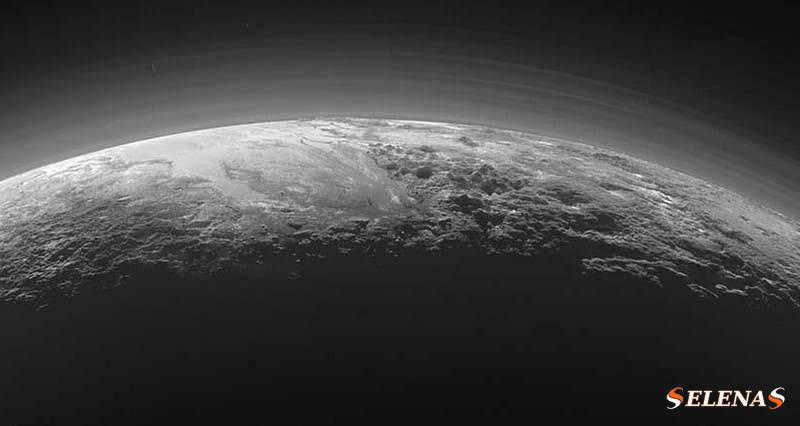
Due to its proximity to the Sun, Mercury has the shortest orbital period among all the planets.
Consequently, a year on Mercury only lasts about 88 Earth days.
One notable characteristic of Mercury’s orbit is its high eccentricity compared to the other planets.
In fact, Mercury has the most elliptical orbit out of all the planets.
This means that the difference between Mercury’s perihelion (the closest point to the Sun in its orbit), which is approximately 46 million kilometers, and its aphelion (the farthest point from the Sun), which is around 698,000 kilometers, is significantly larger compared to the other planets.
To put it simply, Mercury experiences much higher temperatures at perihelion compared to aphelion due to the significant difference in distances between the two.
In contrast, the temperatures of the other planets remain relatively stable because their aphelion and perihelion distances are almost the same.
An orbit with a strong eccentricity
Mercury’s orbit is also significant as it serves as a perfect example of modern physics.
Over time, Mercury’s orbit undergoes slight shifts around the Sun (see Figure 1).
This phenomenon is known as precession.
While Newtonian mechanics (i.e., classical physics) provides a fairly accurate prediction of the rate of this precession, it is still not completely precise.
This posed a persistent challenge for astronomers in the late 19th and early 20th centuries.
Several hypotheses were proposed in order to account for the disparity between the observed and predicted rates.
One hypothesis even posited the existence of an unidentified celestial body situated closer to the Sun than Mercury.
However, the truth was ultimately unveiled with the publication of Einstein’s general theory of relativity.
Thanks to this theory, the orbital precession of Mercury was finally accurately explained.
Although it was previously believed that Mercury’s spin-orbit resonance (the number of rotations per orbit) was 1:1, it was discovered in the mid-20th century that it is actually 3:2.
This resonance creates a captivating phenomenon that would be remarkable to witness on the planet’s surface.
For instance, the Sun appears to ascend to its highest point in the sky, then alters its trajectory and sets in the same direction from which it ascended.
Frequently asked questions about Mercury
What is the number of moons that Mercury has?
Due to its close proximity to the Sun and the strength of its gravity, Mercury lacks the ability to hold any moons in its orbit.
Venus, in a similar way, also does not possess any satellites. However, scientists remain uncertain about the exact reasons behind this.
What is the length of a day on Mercury?
A day on Mercury is approximately equivalent to 58 days and 15 hours on Earth.
In contrast, a full year on Mercury lasts around 88 Earth days!
This means that every two Earth years, there are three days on Mercury. It truly is an astonishing fact.
What is the appearance of Mercury?
The surface of Mercury bears a striking resemblance to the heavily cratered surface of Earth’s Moon.
Due to its extremely thin atmosphere, Mercury offers little defense against impacts.
As a result, the planet is covered in scars from countless collisions with comets and meteors.
What is the temperature on Mercury like?
The temperature on Mercury is quite unpredictable.
During the night, the temperatures can plummet to as low as -180°C.
During the day, the temperatures can skyrocket to 427°C (800°F), and on average, the temperature is around 167°C.
It is worth noting that Mercury is not the hottest planet in our solar system.
That distinction goes to Venus, which has a denser atmosphere and a rampant greenhouse effect.
The earliest documented observations of Mercury can be traced back thousands of years in ancient Sumerian and Assyrian records.
Despite being visible to the naked eye, Mercury is the most challenging of the five planets that can be seen without a telescope due to its close proximity to the horizon.
What is the origin of Mercury’s name?
The name Mercury was given to the planet in the 4th century BC, inspired by the quick and impulsive Roman messenger god.
Surface Characteristics of Mercury
The surface of Mercury bears a striking resemblance to that of our Moon, exhibiting vast impact basins, craters, and plains resembling seas.
Mercury boasts numerous significant geological surface features.
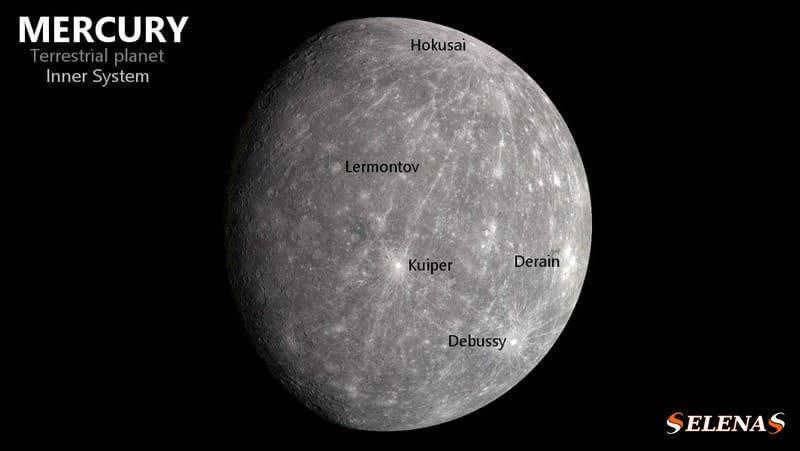

| Characteristic | Kind |
| Abedinus | crater |
| Beckett | crater |
| Beethoven Basin | crater |
| Caloris Basin | crater |
| Debussy | crater |
| Deren | crater |
| Jebran | crater |
| Hokusai | crater |
| Kuiper | crater |
| Lermontov | crater |
| Picasso | crater |
| Skinakas Basin | crater |
| Tolstoy Basin | crater |
Polar Regions of Mercury
On the planet Mercury, its polar regions are known for their significant deposits of water ice that are found in deep craters, perpetually shielded from sunlight.
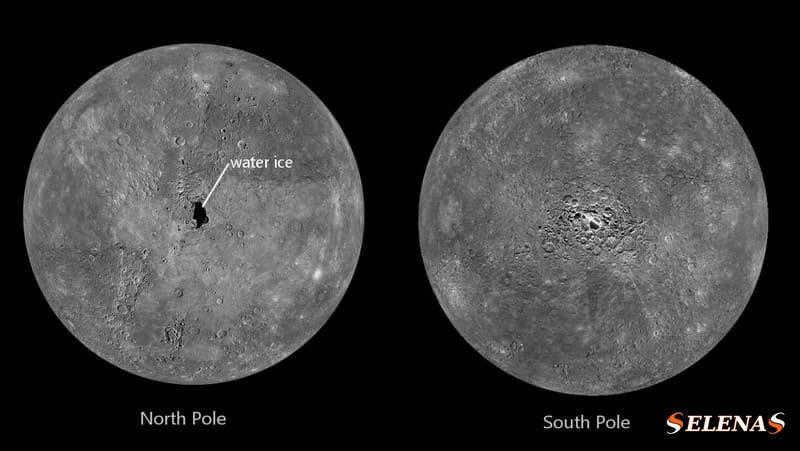

If you still have any queries or would like to share your thoughts regarding this article, please feel free to leave a comment in the section below.
Looking forward to hearing from you! Join the conversation!
Mercury is one of the five planets in our solar system that can be observed with the naked eye, without the need for optical instruments like binoculars or telescopes. As a result, knowledge of these planets dates back several thousand years. However, determining the exact individual who first discovered Mercury is a challenge. During that time, people did not maintain written documentation of their observations. Nevertheless, numerous renowned scientists have since studied this planet extensively.
Discovery History
Mercury is among the earliest planets that were discovered by humans, although the exact date of its discovery remains unknown. The journey begins with the ancient Sumerians, who thrived during the early Bronze Age. They associated this celestial object with the god Nabu, who was the god of writing. The planet was also recognized by the priests of ancient Egypt and Babylon.
The ancient Chinese referred to this object as the “morning star,” while in Japan and Vietnam it was commonly known as the “water star.” According to Indian mythology, Mercury was called “Budha” by its people, which is the name of the god who governs Wednesdays. The people of South America believed that the planet was a moon of Neptune.
It is worth mentioning that the Greeks had a perception of Mercury as being two separate planets. They referred to the morning planet as Apollo and the evening planet as Hermes. This theory was believed by the ancient Greeks for a span of 2.5 thousand years. However, eventually they were able to establish that it is indeed one and the same celestial object.
In this particular case, the individual who discovered the history of Mercury remains unknown. Since the object can be observed without the use of optical devices, its existence was known about approximately 5 thousand years ago. Furthermore, people were able to determine the location and movement of the planet. As a result, scientists were truly astounded by the level of detail and accuracy in these calculations.
In 1631, the exploration of Mercury commenced, with Pierre Gassendi becoming the first person to witness the celestial object’s movement across the Sun. Subsequently, Giovanni Zupi studied its phases and deduced that the planet orbits the Sun.
During that era, other scientists also conducted research on this celestial object, each arriving at their own conclusions. For instance, astronomer Giovanni Scriaparelli, after extensive observations, discovered that the celestial object is obscured by the Sun, implying that it always presents the same side to the star.
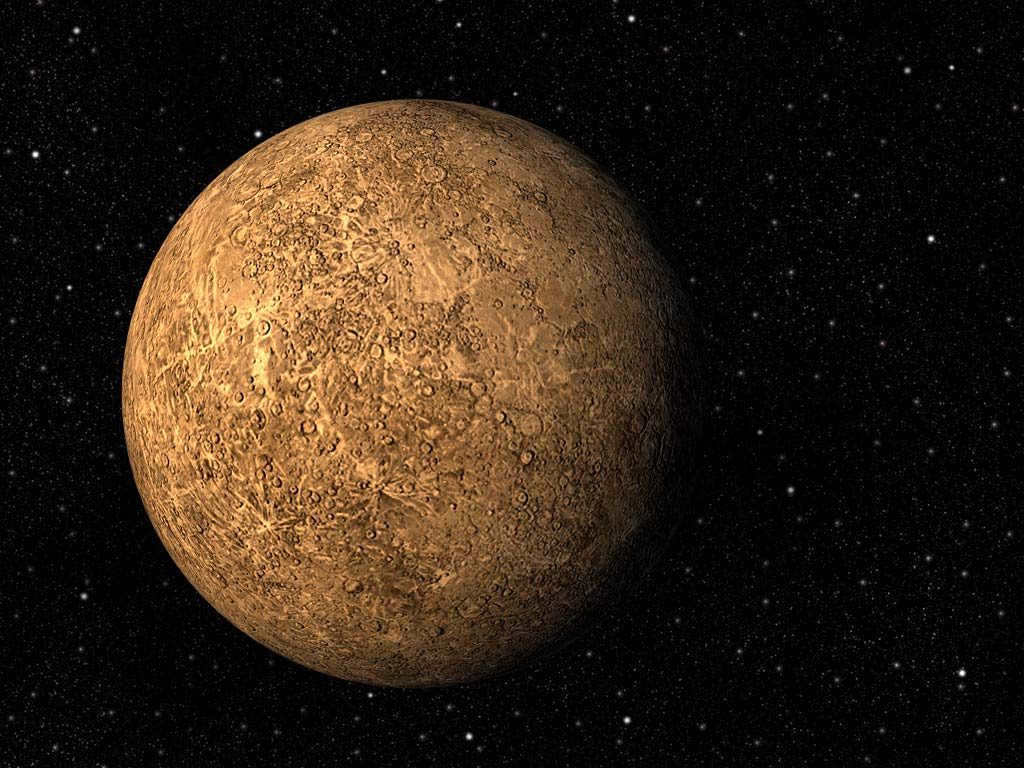

Recognition of planetary status
When did Mercury start being recognized as a planet? The concept of the heliocentric model of the universe was first proposed by Nicolaus Copernicus. According to this model, the Sun occupied the central position in the solar system. It was during this time that Mercury was first designated as a planet. Galileo Galilei further solidified this classification for Mercury, as he fully embraced Copernicus’ teachings.
Reasons behind the Name of the Planet
The planet’s name has its roots in ancient Roman mythology. It was named after the god who was the protector of trade, cleverness, and trickery. The choice of this name is linked to the planet’s remarkable speed in orbiting the Sun. Mercury completes one orbit around the star in just 88 Earth days, giving it a prominent position among all the celestial bodies in the solar system. However, the exact year when this name was given to the planet remains unknown.
Further investigations of the extraterrestrial body
Presently, Mercury remains one of the least-explored celestial bodies within the Earth group. Nevertheless, numerous scientists are actively engaged in the examination of this particular astronomical entity. In 1841, Johann Enke effectively determined its mass. This accomplishment was made possible by the perturbations in the movement of the comet, which was subsequently named after him.
From that point until 1934, the cartography of the planet’s terrain continued. The outcomes of the investigation were subsequently documented by Eugene Antoriadi. He is also credited with assigning names to many features of Mercury’s surface.
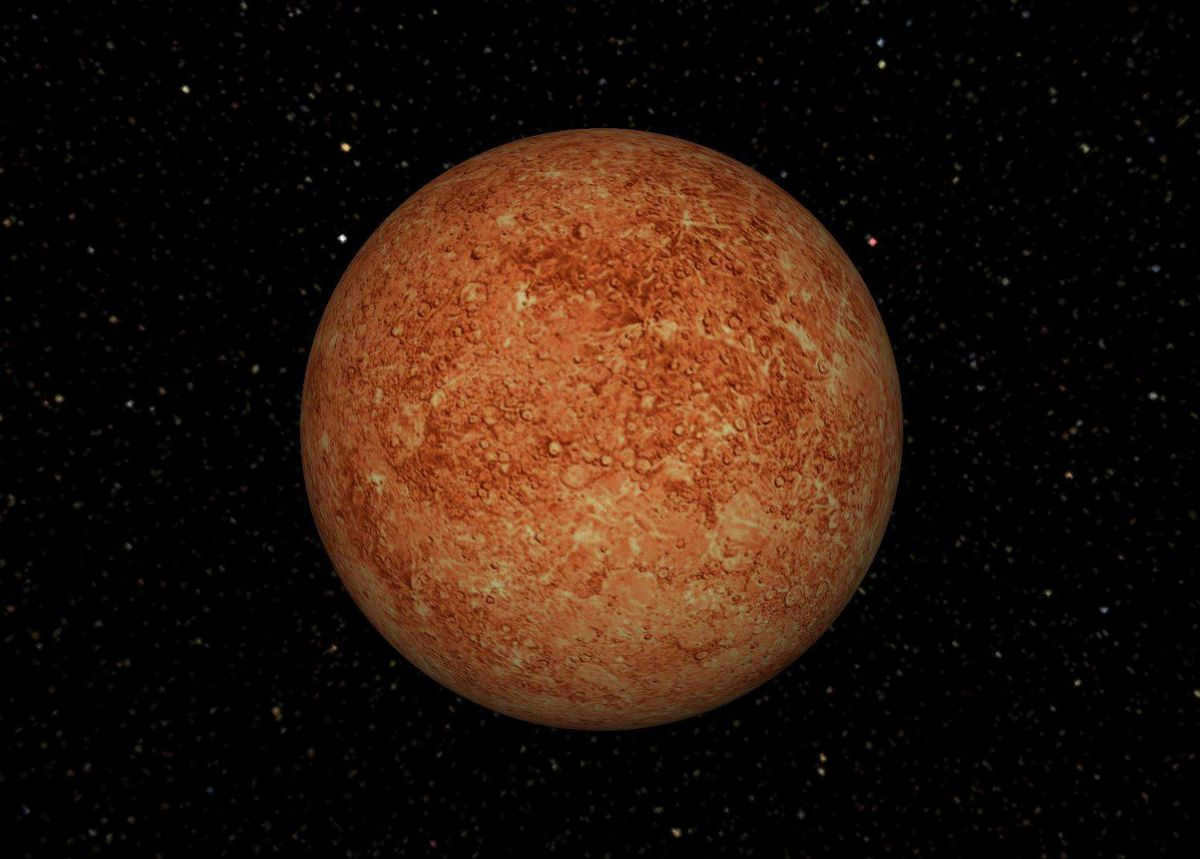
Back in the 1960s, scientists from the Soviet Union used a powerful telescope to gather data about the surface characteristics of Mercury. Soon after, American researchers conducted a similar study and verified the findings of their Soviet counterparts. The data revealed that Mercury takes 88 Earth days to complete one orbit around the sun, and it rotates on its axis every 59 days.
This research played a significant role in the annals of space exploration. Over the course of its mission, the interplanetary spacecraft captured over 4 thousand photographs. In actuality, it accomplished the remarkable feat of surveying not just one, but two planets in a single voyage. In addition to Mercury, the probe was also dedicated to studying Venus.
The Messenger spacecraft was able to collect data on temperature parameters on Mercury, capture images of approximately 45% of the planet’s surface, and gather information about its atmospheric conditions. New photographs of Mercury were obtained in 2008 through the use of the Messenger probe, which took 6.5 years to reach the planet’s orbit.
During its journey, the Messenger spacecraft discovered ice on the surface of Mercury for the first time. The presence of craters on the planet indicates that geological activity ceased billions of years ago. Currently, 70% of the studied area is covered in craters, with dark rock formations also present. Scientists speculate that these formations may contain silicon, titanium, or iron. It is believed that Mercury may have had rings in the past, although no such system exists today.
The detection of Mercury marks a significant milestone in the field of astronomy. Simultaneously, investigations into this celestial body commenced in ancient times, as it did not necessitate the utilization of optical instruments. Subsequently, the circumstances have undergone significant transformations. Researchers now possess an array of enhanced capabilities to explore Mercury, thereby enabling them to acquire a plethora of crucial data.
Mercury is the planet closest to the Sun in our Solar System, with an orbital period of 88 Earth days. It is considered an inner planet because it orbits closer to the Sun than the main asteroid belt. Since Pluto lost its planetary status in 2006, Mercury has been recognized as the smallest planet in the solar system. The apparent magnitude of Mercury ranges from -2.0 to 5.5, but it can be difficult to see due to its close proximity to the Sun (reaching a maximum angular distance of 28.3°). At high latitudes, Mercury is always hidden in the morning or evening twilight and cannot be observed in the dark night sky. The best time to observe the planet is during its elongations, which occur multiple times a year and represent Mercury’s maximum distance from the Sun in the sky.
There is still much that is unknown about the planet. The Mariner-10 spacecraft, which conducted a study on Mercury from 1974-1975, was only able to map approximately 40-45% of its surface. In January 2008, the MESSENGER interplanetary station flew past Mercury and is set to enter orbit around the planet in 2011.
Mercury bears a resemblance to the Moon in terms of its physical characteristics, with a heavily cratered surface. It lacks any natural satellites but possesses a very thin atmosphere. The planet’s large iron core is responsible for its magnetic field, which is about 0.1 times that of Earth’s. Mercury’s core accounts for 70% of its total volume. Surface temperatures on Mercury can range from 90 to 700 K (-180 to +430 °C). The side of the planet facing the Sun experiences much higher temperatures compared to the polar regions and the side facing away from the Sun.
Even though Mercury is smaller in size, it still has a greater mass than the satellites of giant planets like Ganymede and Titan.
The astronomical symbol of Mercury is a representation of the winged helmet of the god Mercury along with his caduceus.
Origin and nomenclature
The oldest evidence of Mercury sightings can be found in ancient Sumerian texts written in cuneiform script that date back to the third millennium B.C. This celestial body is named after the Roman god Mercury, who is equivalent to the Greek god Hermes and the Babylonian god Naboo. In Hesiod’s time, the ancient Greeks referred to Mercury as “Στίλβων” (Stilbon), meaning “Brilliant.” It wasn’t until the 5th century BC that the Greeks realized the evening and morning sightings of Mercury were actually the same object. In ancient India, Mercury was known as “Buddha” (बुध) and “Roginea.” In Chinese, Japanese, Vietnamese, and Korean, Mercury is called the “Water Star” (水星), aligning with the concept of the “Five Elements.” In Hebrew, Mercury’s name is pronounced as “Kohav Hamá” (כוכב חמה), which means “Solar Planet.”
The movement of the celestial body
Mercury orbits around the Sun in a highly elongated elliptical path (with an eccentricity of 0.205), at an average distance of 57.91 million kilometers (or 0.387 astronomical units). When it is closest to the Sun, Mercury is approximately 45.9 million kilometers away (or 0.3 astronomical units), and when it is farthest, it is around 69.7 million kilometers away (or 0.46 astronomical units). Thus, Mercury is more than one and a half times closer to the Sun in perihelion than in aphelion. The inclination of its orbit to the ecliptic plane is 7 degrees. It takes Mercury 87.97 days to complete one full orbit around the Sun. The average speed at which the planet moves in its orbit is 48 kilometers per second.
It was previously believed for a considerable period of time that Mercury always had the same face turned towards the Sun, and that it took 87.97 days for one complete revolution around its axis. These beliefs were seemingly supported by observations of Mercury’s surface details made at the limits of resolution. However, this misconception arose because the most favorable conditions for observing Mercury occur every triple synodic period, which is approximately 348 Earth days, or roughly six times the period of Mercury’s rotation (352 days). As a result, different areas of the planet’s surface were observed at different times, giving the impression of a constant face. Conversely, some astronomers argued that a Mercurian day was approximately equal to an Earth day. The truth was finally revealed in the mid-1960s when radar observations of Mercury were conducted.
It has been discovered that the duration of one sidereal day on Mercury is equivalent to 58.65 Earth days, which is two-thirds of a Mercury year. This unique phenomenon, where the rotation and revolution periods of Mercury are in a commensurable relationship, is not observed elsewhere in the Solar System. This can be attributed to the tidal influence of the Sun, which gradually depleted Mercury’s momentum and caused its rotation to slow down from its initial faster pace until the two periods became connected by a whole number ratio. Consequently, over the course of one Mercury year, the planet completes one and a half revolutions around its axis. This means that if a specific point on Mercury’s surface is directly facing the Sun during its perihelion passage, the opposite point on the surface will be facing the Sun during the next perihelion passage. After one more Mercury year, the Sun will once again be positioned directly above the initial point. As a result, a solar day on Mercury lasts for two Mercury years or three Mercury sidereal days. [5]
Another unique phenomenon arises from the combination of planetary movements. While the planet maintains a nearly constant rotational velocity around its axis, its orbital velocity is in a constant state of change. During a specific portion of the orbit, known as the perihelion, for approximately 8 days, the speed of orbital motion surpasses that of rotational motion. As a result, the Sun in the sky of Mercury appears to come to a halt and then begins moving in the opposite direction – from east to west. This occurrence is often referred to as the Joshua effect, in reference to the main character of the Book of Joshua in the Bible who was said to have halted the motion of the Sun (Nav., X, 12-13). For an observer situated at longitudes 90° away from the “hot longitudes,” the Sun rises (or sets) twice.
Another fascinating fact is that, even though Mars and Venus are the planets closest to Earth in terms of their orbital positions, it is actually Mercury that spends more time being the closest planet to Earth than any other. This is because the other planets are further away and not as closely connected to the Sun.
Physical traits


Mercury, which belongs to the Earth group, is the tiniest planet. With a radius of merely 2439.7 ± 1.0 km, it is smaller than Ganymede, Jupiter’s moon, and Titan, Saturn’s moon. With a mass of 3.3 × 10 23 kg, Mercury’s average density is relatively high at 5.43 g/cm³, just slightly lower than Earth’s. This suggests that Mercury, despite being smaller, has a higher concentration of metals in its interior. The free-fall acceleration on Mercury is 3.70 m/s², while its second space velocity is 4.3 km/s.
Due to its close proximity to the Sun and its relatively slow rotation, as well as the absence of an atmosphere, Mercury experiences the most extreme temperature fluctuations in the entire solar system. During the day, the average surface temperature on the planet reaches a scorching 623 K (349.9 °C), while at night, it drops to a chilling 103 K (-170.2 °C). The lowest recorded temperature on Mercury is a bone-chilling 90 K (-183.2 °C), while the highest temperature, which occurs at midday in the “hot longitudes” when the planet is near perihelion, can reach a blistering 700 K (426.9 °C).
Despite the prevailing circumstances, there has been recent speculation surrounding the potential presence of ice on the surface of Mercury. Radar investigations of the planet’s circumpolar areas have revealed the existence of a highly reflective material that responds strongly to radio waves, with ordinary water ice emerging as the most probable candidate. Upon collision with comets, water is released and subsequently disperses throughout the planet, ultimately freezing in the polar regions within deep craters shielded from the Sun’s rays. In these secluded areas, the ice has the capacity to endure virtually indefinitely.
Until recently, scientists believed that Mercury had a metallic core measuring 1800-1900 km in radius, which accounted for 60% of the planet’s mass. This core was thought to be surrounded by a silicate shell approximately 500-600 km thick. The basis for this assumption was the detection of a weak magnetic field by the Mariner 10 spacecraft, leading researchers to conclude that such a small planet could not have a liquid core. However, in 2007, Jean-Luc Margot and his team conducted radar observations of Mercury over a five-year period. During this time, they observed variations in the planet’s rotation that were too significant to be explained by a solid-core model.
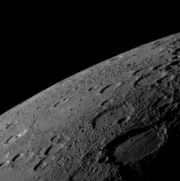
The MESSENGER probe has captured images of more than 80% of Mercury’s surface and discovered that it is uniform throughout, setting it apart from the Moon or Mars, where one hemisphere is significantly distinct from the other. [6]
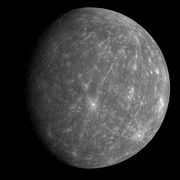
One of the most notable features on the surface of Mercury is the Plain of Heat, also known as Caloris Planitia. This particular crater was given its name due to its proximity to one of the “hot longitudes”. The crater spans approximately 1300 kilometers, suggesting that the object that created it had a diameter of at least 100 km. The impact was so powerful that seismic waves traveled across the entire planet and converged at the opposite point on the surface, resulting in the formation of a rugged and chaotic landscape.
The Kuiper crater, with a diameter of 60 km, boasts the highest albedo on Mercury’s surface. It is believed to be one of the most recent large craters on the planet.
Atmospheric Composition and Physical Fields
During the flyby of Mercury by the Mariner 10 spacecraft, it was discovered that the planet possesses an incredibly thin atmosphere, with a pressure 5×10 11 times lower than that of Earth’s atmosphere. These conditions result in a higher frequency of atom collisions with the planet’s surface rather than with each other. The atmosphere is primarily composed of atoms that have been captured from the solar wind or dislodged from the surface by the solar wind, including helium, sodium, oxygen, potassium, argon, and hydrogen. The average lifespan of an atom in this atmosphere is approximately 200 days.
Mercury possesses a magnetic field that is 300 times weaker than Earth’s magnetic field. The magnetic field of Mercury has a dipole structure and is remarkably symmetrical. The axis of the magnetic field is only deviated by 2 degrees from the planet’s rotational axis, which poses a significant challenge for theories explaining its origin. [6]
On February 5, 2008, a team of astronomers led by Jeffrey Bomgardner from Boston University made an exciting announcement – they had discovered a comet-like tail on the planet Mercury that stretched over 2.5 million km in length. This remarkable finding was made during observations using ground-based observatories that focused on the sodium line. Prior to this discovery, the known length of Mercury’s tail was only about 40,000 km long. The team first captured an image of the tail in June 2006 using the 3.7-meter telescope at the U.S. Air Force’s Mount Haleakala in Hawaii. They then utilized three other smaller instruments, one at Haleakala and two at the McDonald Observatory in Texas, USA. To capture a wide field of view, they used a telescope with a 4-inch aperture (100 mm). In May 2007, senior scientist Jody Wilson and graduate student Carl Schmidt obtained another image of Mercury’s long tail. For an observer on Earth, the apparent length of the tail is roughly 3°.
Investigation
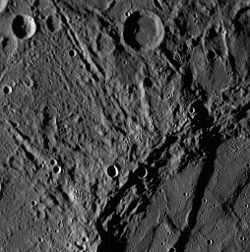
Mercury is the most unexplored planet in the Earth group. Only two missions have been launched to investigate it. Mariner 10 was the first spacecraft to approach Mercury, making three flybys between 1974 and 1975. The closest approach was 320 km. This mission captured thousands of images, which covered approximately 45% of the planet’s surface. Additional research conducted from Earth revealed the potential presence of water ice in the polar craters.
The MESSENGER mission, currently being conducted by NASA, is the second mission to Mercury. Launched on August 3, 2004, the spacecraft successfully completed its first flyby of Mercury in January 2008. To achieve orbit around the planet in 2011, the spacecraft utilized two gravitational maneuvers in October 2008 and September 2009. Additionally, MESSENGER conducted a flyby of Earth in 2005 and two flybys of Venus in October 2006 and June 2007, during which important equipment checks were performed.
The BepiColombo mission, a joint effort by the European Space Agency (ESA) and the Japanese Aerospace Exploration Agency (JAXA), is currently in development. This mission will consist of two spacecraft, the Mercury Planetary Orbiter (MPO) and the Mercury Magnetospheric Orbiter (MMO). The MPO will be responsible for exploring the surface and depths of Mercury, while the MMO will focus on observing the planet’s magnetic field and magnetosphere. The launch of the BepiColombo mission is scheduled for 2013, with the spacecraft expected to reach Mercury’s orbit in 2019. Upon arrival, the mission will separate into its two components to carry out their respective objectives.
Advancements in the field of electronics and computer science have opened up new possibilities for observing Mercury from the ground using CCD radiation receivers and subsequent computerized image processing. One of the pioneers in this field was Johan Varell, who conducted a series of observations of Mercury using CCD receivers from 1995 to 2002 at the La Palma Island Observatory, utilizing a half-meter solar telescope. Varell manually selected the best images from his observations, without the aid of computerized image processing.
Later on, the series of photographs of Mercury taken on November 3, 2001, were subjected to reduction at the Abastuman Astrophysical Observatory, while the series from May 1-2, 2002, were processed at the Skinakas Observatory of the University of Heraklion. The correlation matching method was employed to analyze the results of these observations. The resulting resolved image of the planet exhibited similarities to the photomosaic obtained by the Mariner-10 spacecraft, with the outlines of small formations ranging in size from 150 to 200 kilometers being replicated. This enabled the creation of a map of Mercury for longitudes 210-350° [11].
Mercury in the world of art
- In the science fiction tale “The Closest to the Sun” (1956) by Boris Lyapunov, Soviet astronauts are the first to touch down on both Mercury and Venus in order to conduct research.
- The setting for Isaac Asimov’s story “Mercury’s Big Sun” (part of the Lucky Starr series) is on the planet Mercury.
- Isaac Asimov’s stories “Runaround” (1941) and “The Dying Night” (1956) both describe Mercury as a planet that is constantly facing the Sun on one side. In the latter story, the detective plot revolves around this unique characteristic of Mercury.
- In Alan Nourse’s science fiction tale “Across the Sunny Side,” the protagonists venture across the side of Mercury that is always facing the Sun. The narrative conforms to the prevailing scientific beliefs of its time, which posited that Mercury had a permanently sunlit side.
- In the anime series Sailor Moon, the planet Mercury is personified as the warrior girl Sailor Mercury, also known as Ami Mitsuno. Her abilities revolve around the power of water and ice.
- In Clifford Saimak’s science fiction novel Once Upon a Mercury, the primary setting is Mercury, where an advanced life form known as orbs surpasses humanity in development by millions of years, having long surpassed the stage of civilization.
Curious trivia
- Mercury holds the title for being the swiftest planet in our solar system, as it whizzes around the Sun at an average velocity of 47.87 km/s, which is nearly twice as fast as Earth. This rapid pace, combined with its proximity to the Sun compared to Earth, means that one year on Mercury (the duration it takes for a complete orbit around the Sun) only lasts 87.99 days.
- Observing Mercury can be quite challenging in high latitudes of the Earth. This is because it is always seen at dawn or in the evening, against the backdrop of a twilight sky. Additionally, it is relatively low above the horizon, especially in northern latitudes. Its best visibility period, known as elongation, occurs multiple times a year and lasts for about 10 days. However, even during these periods, spotting Mercury with the naked eye can be difficult due to its dimness against the bright sky. There is a tale that Nicolaus Copernicus, who observed celestial objects in the foggy climate of the Baltic States, never had the opportunity to see Mercury in his lifetime. On the other hand, Mercury is easily visible in low latitudes.
- Mercury, unlike Earth, does not experience traditional seasons due to its unique rotation axis and orbit. The planet’s rotation axis is perpendicular to the plane of its orbit, resulting in areas near the poles that never receive direct sunlight. Recent research conducted using the Arecibo radio telescope has discovered the presence of glaciers in these cold and dark regions. These glaciers can have a thickness of up to 2 meters and are covered by a layer of dust [12].
- Out of all the planets visible to the naked eye, Mercury is the only one that has never had its own artificial satellite. However, this is set to change in 2011 with the planned entry of the AMS MESSENGER into Mercury’s orbit.
- The Hubble Telescope cannot be used to observe Mercury due to its design limitations. The telescope is not equipped to observe objects near the Sun, and attempting to do so would result in irreversible damage to the equipment. [13]
Notes
- ↑David R. Williams.Mercury Fact Sheet (English) . NASA (November 30, 2007). Checked February 12, 2009.
- ↑http://solarsystem.nasa.gov/planets/profile.cfm?Object=Mercury&Display=Facts
- ↑ESA Science & Technology: Background Science . European Space Agency. Checked March 20, 2009.
- ↑Mercury's magnetic field. K. T. Russell and J. G. Lehman. Checked March 16, 2007.
- ↑ З. V. Kononovich, I. V. Moroz. General course of astronomy. С. 306
- ↑R. A. De Hon, D. H. Scott, J. R. Underwood Jr.Geologic Map of the Kuiper (H-6) Quadrangle of Mercury (1981).
- ↑BOSTON UNIVERSITY ASTRONOMERS MAP FULL EXTENT OF MERCURY’S COMET-LIKE TAIL
- ↑Hidden Territory on Mercury Unveiled
- ↑MESSENGER Teleconference Multimedia Page
- ↑Unexplored Aspects of Mercury
- ↑ Philippe Blondel, John W. Mason. Solar System Update. Springer-Verlag 2006. ISBN 978-3-540-26056-1
- ↑Interesting Facts About Mercury. Universe Today (English) .
Additional Resources
Recommended Reading
- Bronstein W. Mercury – the Sun’s Nearest Neighbor // Aksyonova M. D. Encyclopedia for Kids. Vol. 8. Astronomy – M.: Avanta+, 1997. – P. 512-515. – ISBN 5-89501-008-3
- Xanfomaliti L. V.Unexplored Mercury // In the Realm of Science. — 2008. — No. 2.





